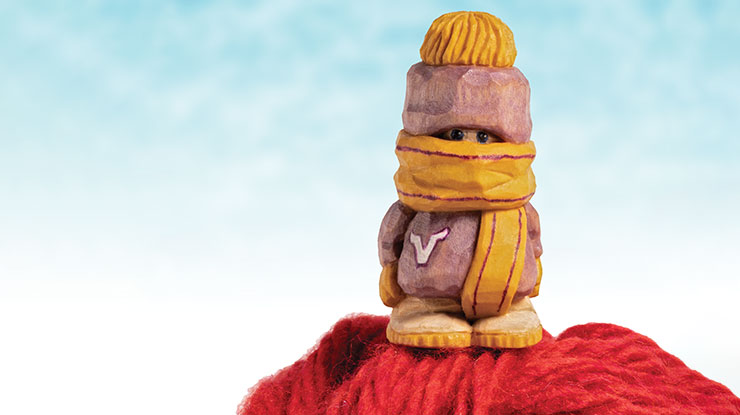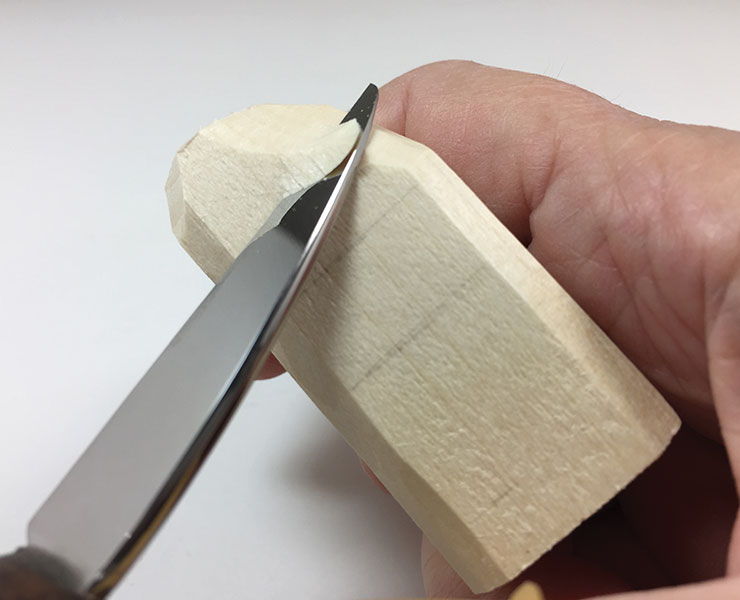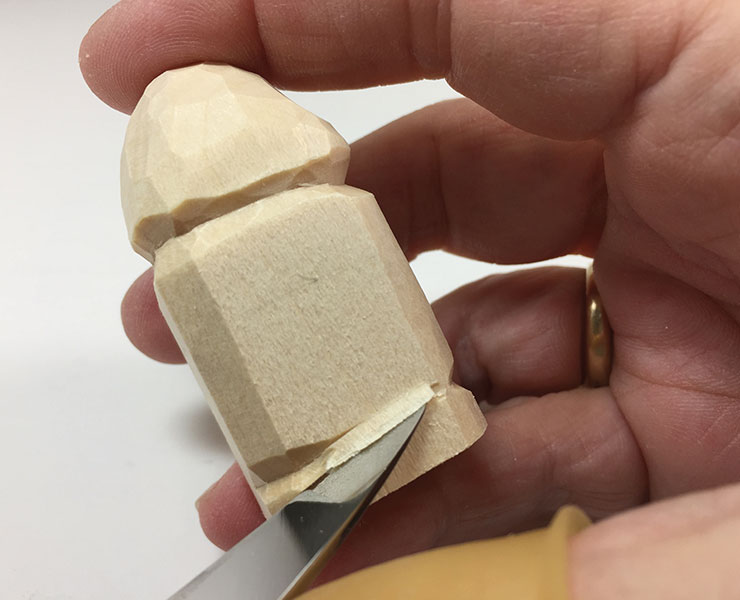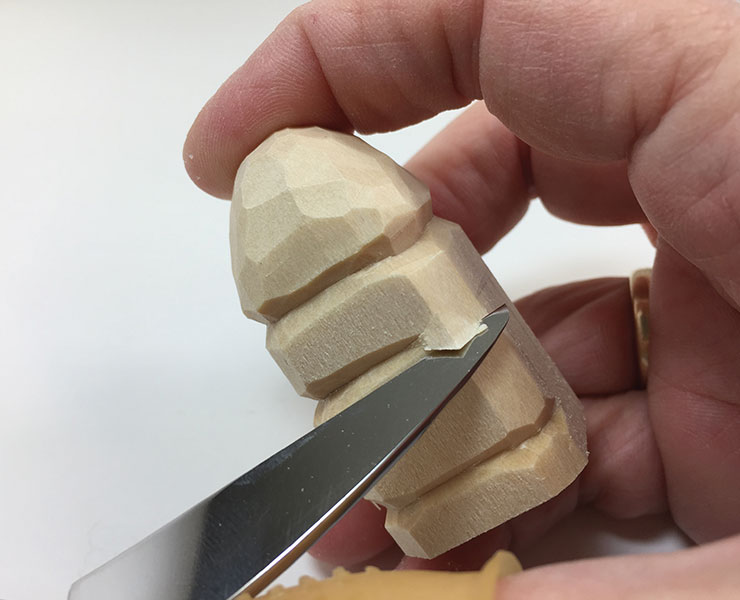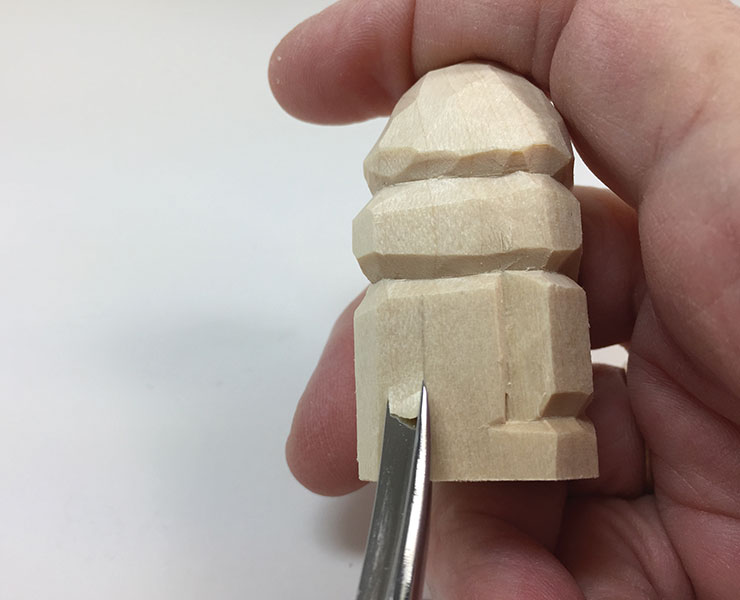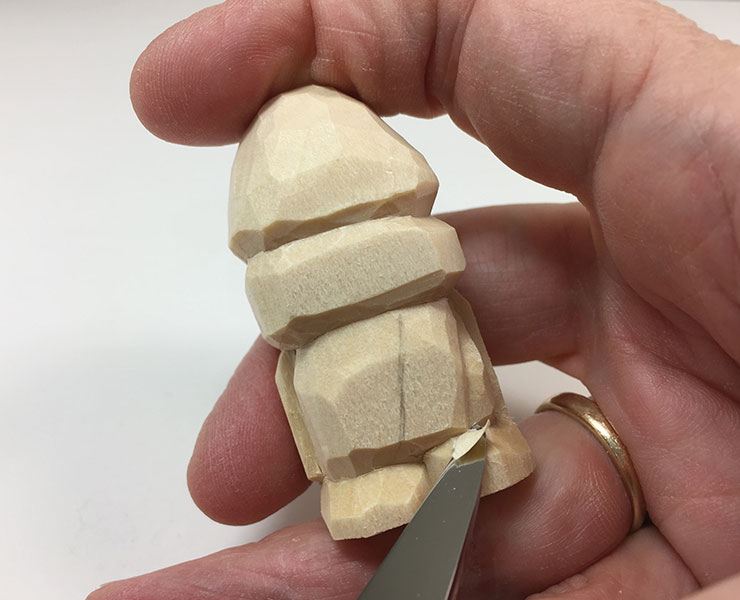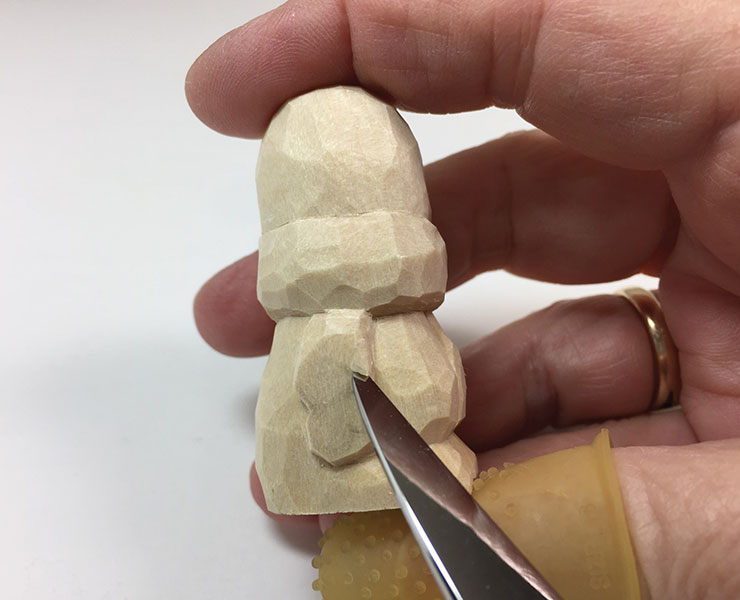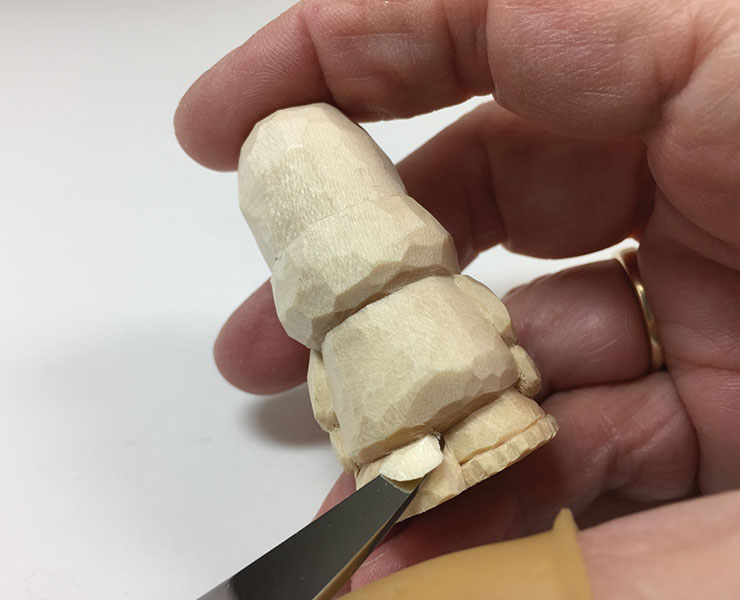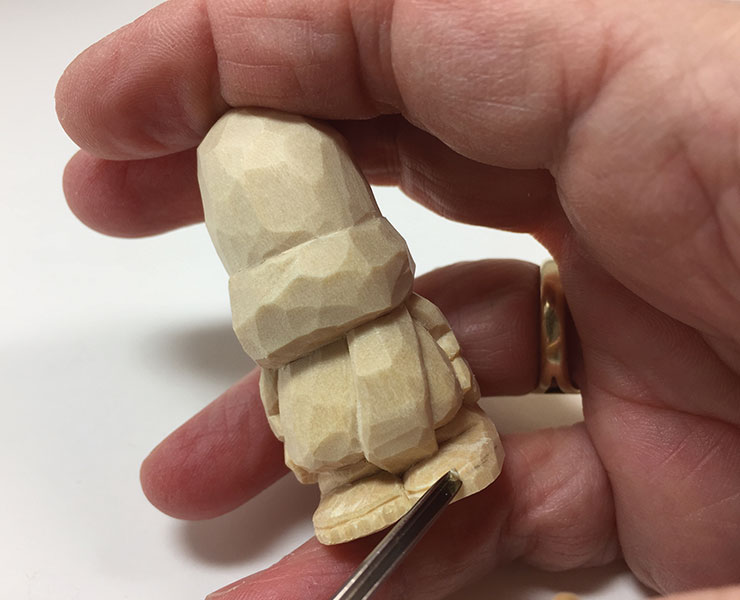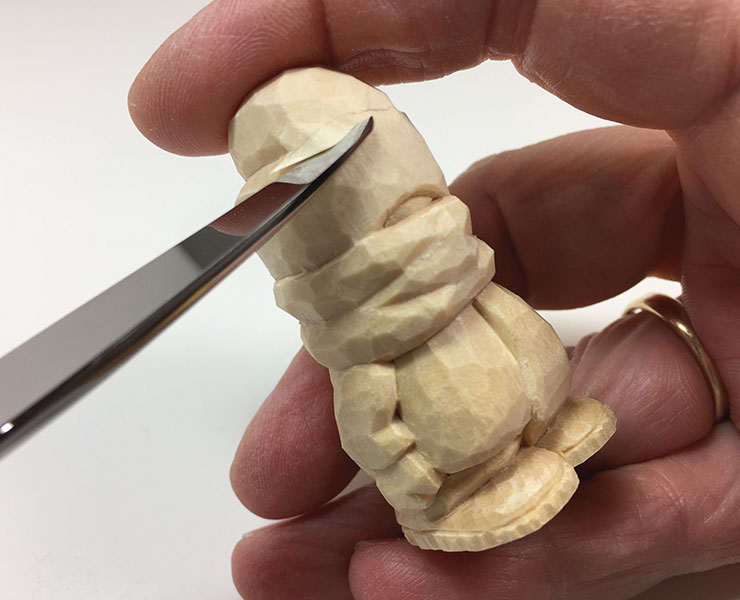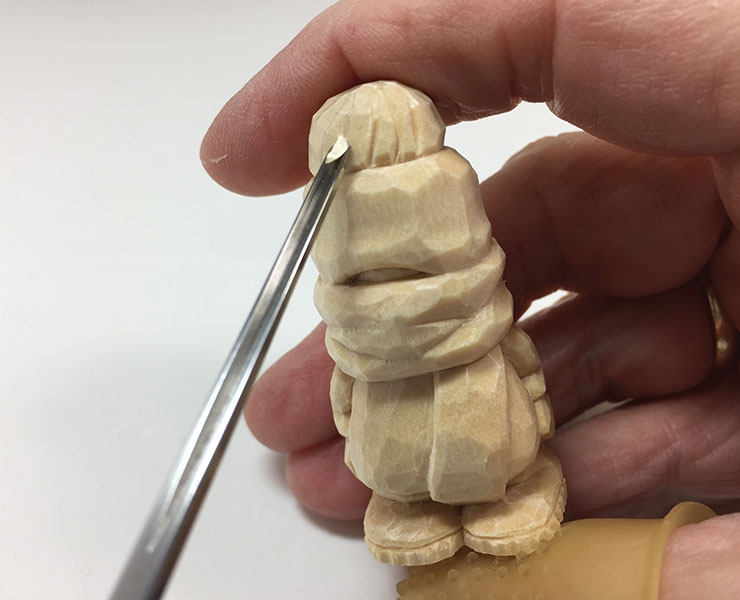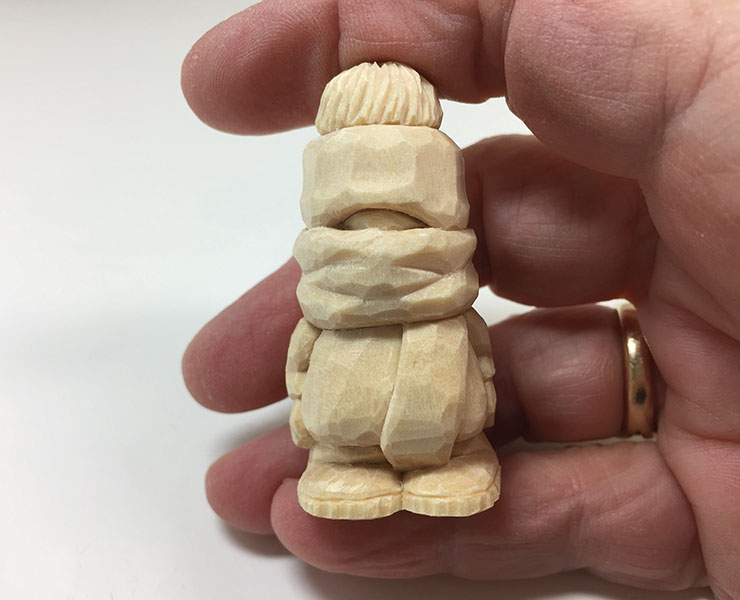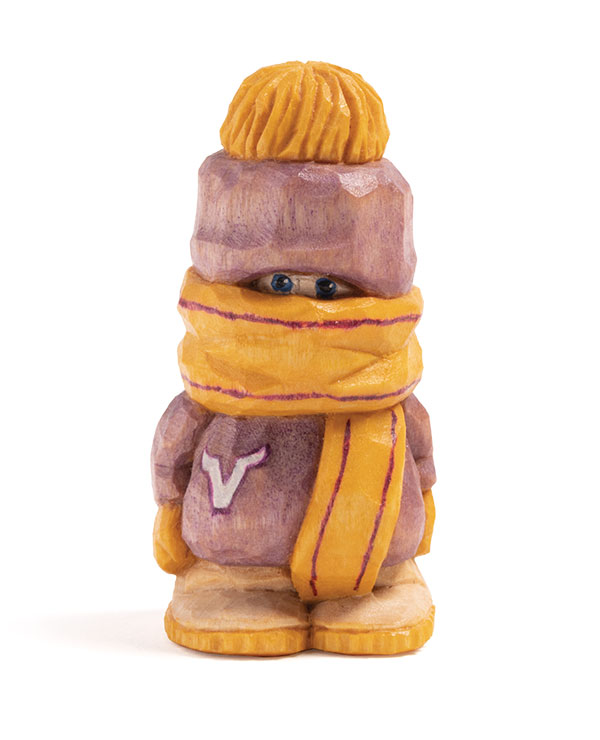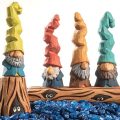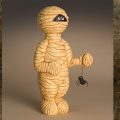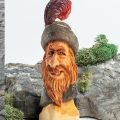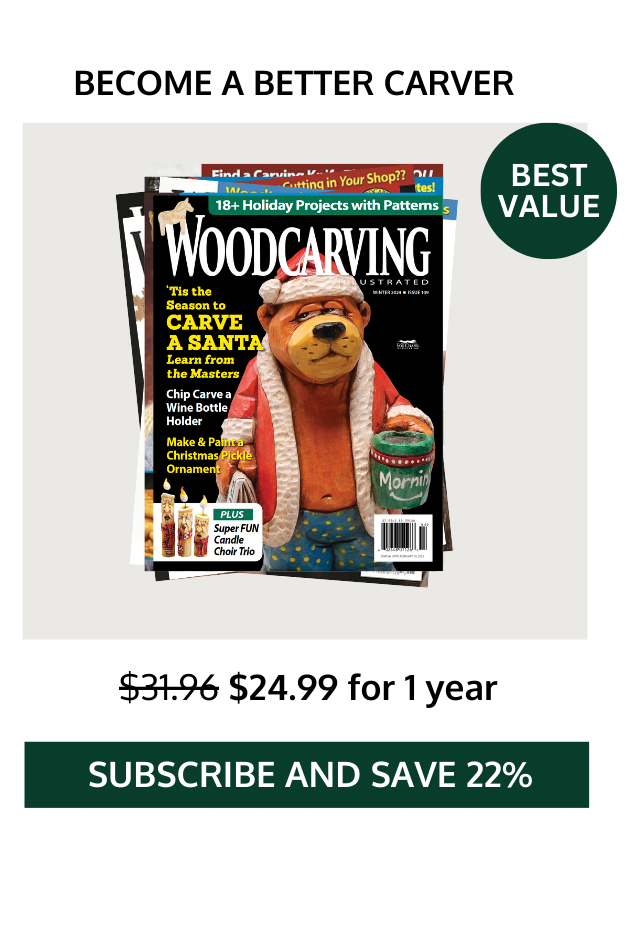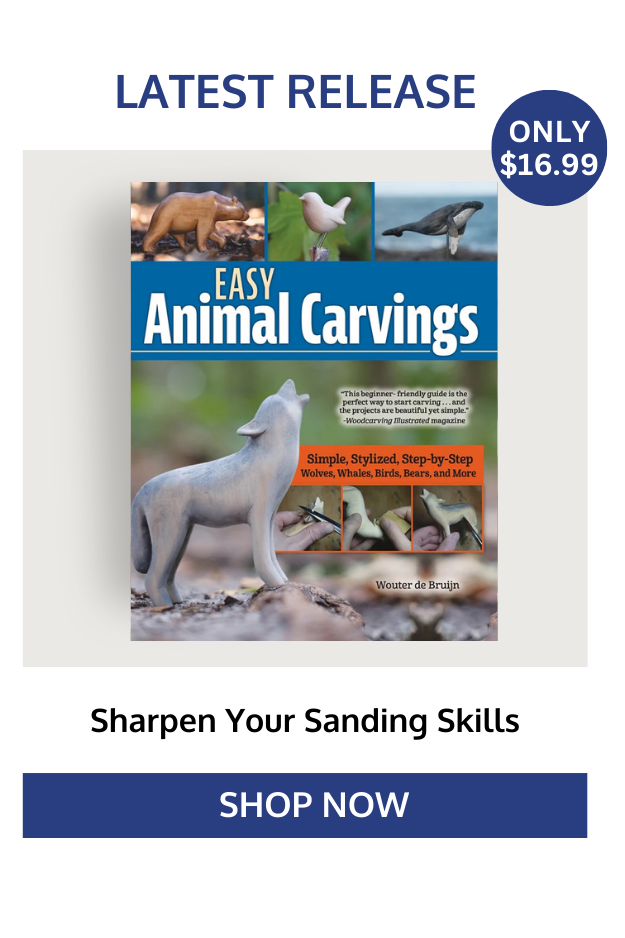Carve a little football fan who’s ready for the cold
By Karen Scalin
It’s football season again and this guy from the Land of 10,000 Lakes is ready for the weather. This character has uncomplicated lines that make him a great beginner project. More advanced carvers can switch him up. Move his scarf down and hat up to add facial features. Create fringe on the scarf, texture the hat, and put pockets on his jacket. However you decide to carve him, be sure to finish him with your team’s colors.
Getting Started
Transfer the patterns to the block with graphite paper and a pencil or sketch them by hand. Note: Always wear a carving glove and thumb guard. The photos were taken without them to clearly show hand and knife positions.
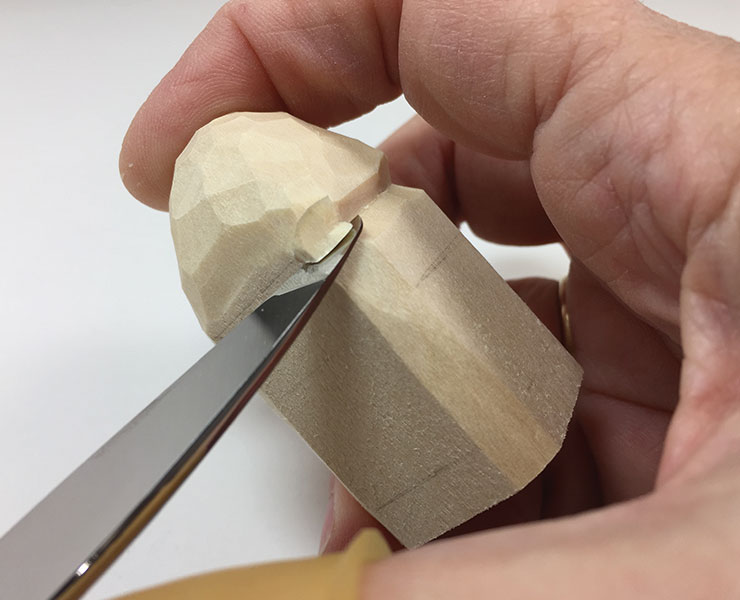 |
2. Rough out the scarf. Using the knife, make V cuts on the upper scarf line. Two cuts are made, one angling down and the other up and in, to form the V shape that meets at the upper scarf line. |
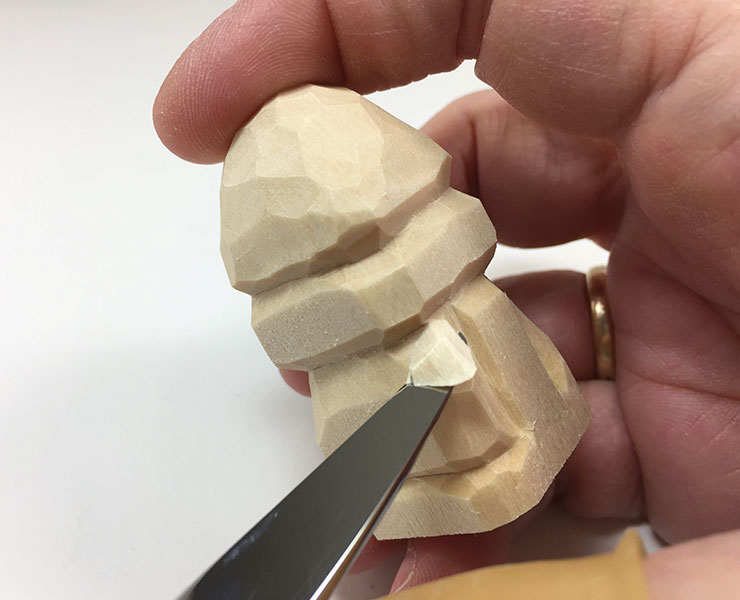 |
6. Roughly shape the body. Use the knife to roughly shape the upper body and back. Make cuts that angle up and in toward the scarf all around the body. |
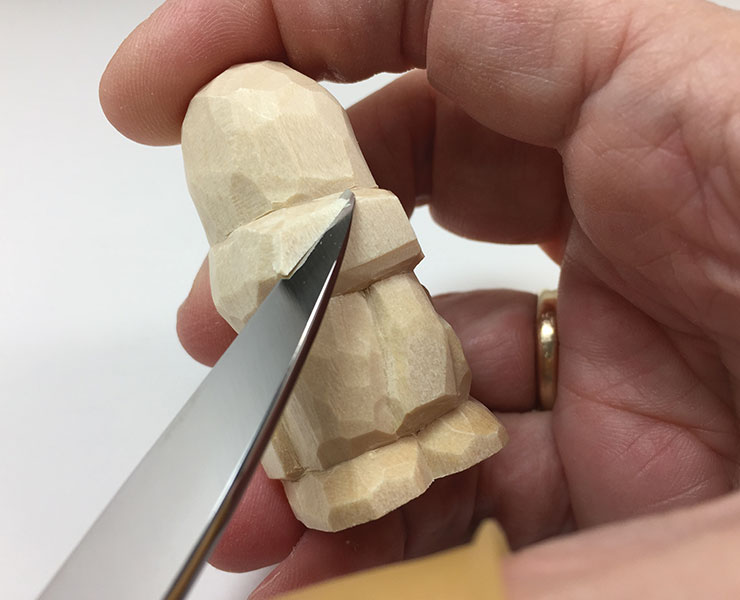 |
8. Taper the hat and scarf. Narrow both areas with the knife so they’re slightly less wide than the body. |
Painting and Finishing
I paint directly onto dry wood with very watered-down acrylic paint, generally one drop of paint to 10 drops of water. Apply lighter colors first, then proceed to darker. Because the carving is so small, be careful not to transfer wet paint from the hand holding the piece to other areas on the carving. An alternative to holding it in your hand is to mount it on a paint stick or base.
Next, it’s dipped in boiled linseed oil that has been thinned with 30% mineral spirits (to speed up the drying process). Boiled linseed oil enhances paint color. Note: Make sure to dispose of oil-soaked rags following the instructions on the finish packaging, as they can spontaneously combust.
Seal, and then antique. I use Delta® Ceramcoat All-Purpose Sealer, a water-based sealer. Follow the sealer with FolkArt® Antiquing Medium Plaid 811, a water-based stain (or similar product), used at half strength on the face and light-colored areas and full strength on all others. Work very quickly to apply the stain, and immediately pat most of it off with a soft cotton rag so that the stain remains mostly just in the cracks and crevices. Finally, apply Howard Feed-N-Wax®.
|
MATERIALS • Basswood, 1″ (2.5cm) square: 2″ (5.1cm) long • Graphite paper • Pencil • Boiled linseed oil • Mineral spirits • Delta Ceramcoat® All-Purpose Sealer • FolkArt® Antiquing Medium Plaid 811 • Acrylic paints: antique gold, charcoal, denum blue, oyster white, purple • Howard Feed-N-Wax® • Paper towels • Soft cotton rag |
TOOLS • Carving knife • Micro gouge: 1/16″ (2mm) • V-tools: 1/16″ (2mm) micro, 1/4″ (6mm) 90° • Paintbrushes • Purple ultra fine Sharpie® |
| About the Author |
|
Karen Scalin has been carving for more than 25 years. She lives in a suburb of Chicago. See more of her work on Etsy at WoodCarvedMinisByKLS. |
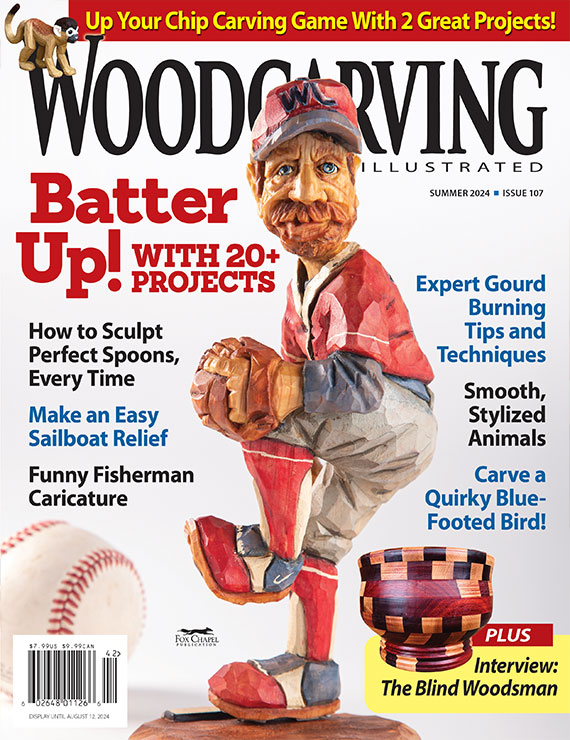 |
Get the Latest Summer Issue! Purchase the IssueFor more articles like this, subscribe to Woodcarving Illustrated magazine. Magazine SubscriptionPlus! Get digital mini magazines in your e-mail between printed issues.
|


